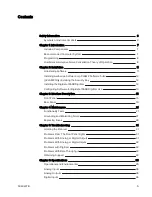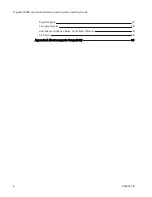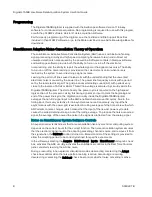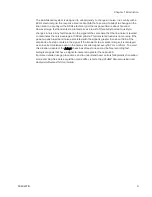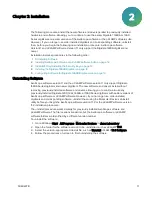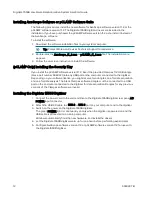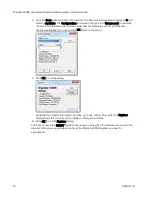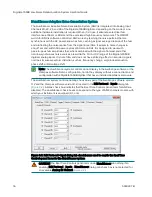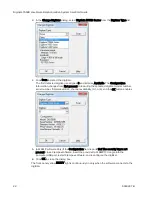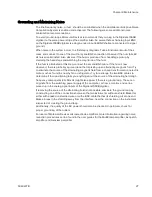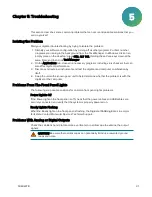
Digidata 1550B Low-Noise Data Acquisition System User Start Guide
18
5040237 B
Adapt — Select this check box to turn on real
‐
time noise pattern learning.
To turn off the real
‐
time noise pattern learning, deselect the Adapt check box.
Note: The Episodic stimulation mode in Clampex software automatically deselects
Adapt.
Deselect Adapt when you have big steps or spikes in your signal, because fast
changes will be visible at as an excursion scaled to
‐
1/50 of the fast signal amplitude
in the output and will take 50 power cycles (about 1 second) to age out of the rolling
averaged noise replica.
Also deselect Adapt when you have line
‐
synchronous signal components that are
of interest.
Subtract — Select this check box to turn on adaptive noise cancellation.
To turn off adaptive noise cancellation, deselect the Subtract check box.
Clear — Click this button to reset the collected cache of the learned real
‐
time noise
‐
patterns. HumSilencer Start and HumSilencer Stop comment tags are displayed in the
Clampex software or AxoScope software data file.
For more detailed usage procedures, refer to the
pCLAMP Data Acquisition and Analysis
Software v11.2 User Guide
.
Digital Outputs
Digital Outputs 0–7 are on the front panel of the Digidata 1550B digitizer. These output levels
can be set to high (+5 V) or low (0 V) TTL-level compatible states. They can be used to trigger
a wide variety of external devices.
Start and Tag Input Triggers
START and TAG are digital input triggers compatible with TTL
‐
level signals.
The START input is used to begin data acquisition from an external trigger source.
The TAG input is used to automatically mark events (for example, perfusion ON) within the
data.
Scope Output
The SCOPE output is a digital signal that reflects specific actions in AxoScope software and
Clampex software, such as the beginning of an acquisition recording, sweep, event, or level. It
is useful as an oscilloscope trigger, or to synchronize data acquisition with other devices.


